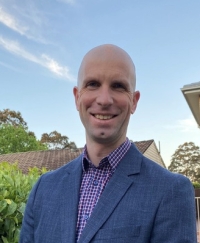AWS re:Invent 2022: Dr Werner Vogels Key Announcements

Justyn Green
Principal Solution Architect, Cloud Adoption

Justyn Green
Principal Solution Architect, Cloud Adoption
Today marked a special day in the re:Invent calendar as Dr Werner Vogels entered the stage for his keynote. Nearly 25 years since he produced the infamous Amazon Distributed Computing Manifesto (1998), Werner entered the stage wearing dark sunglasses and a long overcoat made of leather, like that famous 1999 sci-fi movie about the world being a system of synchronous virtual realities, and began his keynote by focusing on nature and its ability to be asynchronous.
Werner expressed great depth of thought leadership across three focal points in his keynote. I’ll break down some of the themes that Amazon are focusing on this coming year across each of Werner’s three chapters.
Asynchronous
In the history of computing, systems were designed in a synchronised fashion, in line and in an orderly fashion. Werner demonstrated this beautifully with a funny clip of him ordering fries and the waitress cooking each fry one at a time, whilst he patiently waited.
He used an example of a flock of birds flying seemingly as a single-minded entity, but as an asynchronous group of individual animals using their senses to work together and use inputs of one another to remain operational in the air. For Amazon, building a synchronous storage solution would not scale or have capability to evolve without impacts or downtime. S3 design principles were created with evolution baked in from the start. S3 was to be asynchronous. It needed to behave like a flock of birds without error.
Likewise, new systems must be asynchronous with Event-Driven architecture as leads to loosely coupled systems. Complex event driven architecture evolved from simpler synchronous services architecture. Systems must evolve or risk being no longer being relevant! Decoupled systems allow for decomposition of applications without impact or detriment through evolution and change.
Amazon using Amazon to Run with DynamoDB Global Tables
The theory of loosely coupled systems, Werner shared why this is so important. In a real-world example, Werner illustrated that Amazon built DDB Global Tables using (more) Amazon via DynamoDB Streams to feed data to custom services with event-driven triggers that are hosted behind the scenes with SQS and Replicators. The topology is an active/active decoupled event-driven architecture that can commit data in any local table and read out via a regional table. Amazon have learned that customers are wanting to make their applications as easy as Amazon does with the services they release.
Experiment, Now Go Build
AWS want to continue to break through to their customers in a constant evolutionary way. But to do experimentation and try new ways of approaching problems, adoption of simulation is important. Simulations allow for safe, digital, inexpensive trials of a hypothesis.
With simulations, there are 3x components that can be controlled
- Physical limitations
- Hazardous scenarios
- Manipulation of time
Werner re-visited the announcement of Amazon SimSpace Weaver. With companies using the canvas of SimSpace Weaver, models could be constructed that allow for visualisations of scenarios that could be accelerated or forecasted on outcomes that help make decisions.
If a prediction of simulation is repeatedly executed, then building that outcome can be done confidently. Werner made it clear that planning to build architectures with loosely coupled architectures that are possible in the real world whilst experimenting safely with simulations is what the next year holds for us all.
Werner has introduced some really interesting new service announcements including:
- AWS Application Composer (Preview)
- Developer visualisation tool to help people build serverless and loosely coupled systems with a canvas and a console that builds a CloudFormation or SAM template standard.
- Low code platform to simplify and accelerate architecting serverless applications that typically would have a steep learning curve.
- Amazon Code Catalyst
- Taking the non-developer tasks out of developing but doing project scaffolding setup in one single place
- Automated controls and repository management including build tooling and pipelines.
- AWS Step Functions Large-Scale Parallel Workflows
- Iterate over objects or tasks and allow Step Functions to launch thousands of asynchronous workflows backed by Lambda in parallel to enable quicker execution and workflow completion.
- Distributed Map Mode enables these activities to trawl thousands of objects concurrently whilst maintained cost efficiency.
- Amazon EventBridge Pipes
- Provides a simple tool to easily integrate simpler and cost effective point-to-point integrations between event producers and consumers.
To visit all the material Werner releases please check this resource for blogs or articles regularly. The next stages of innovation are for all of us to experiment, build and release.
Do you need help to Go & Build?
Please reach out to help simulate experiments in your business, please contact us.